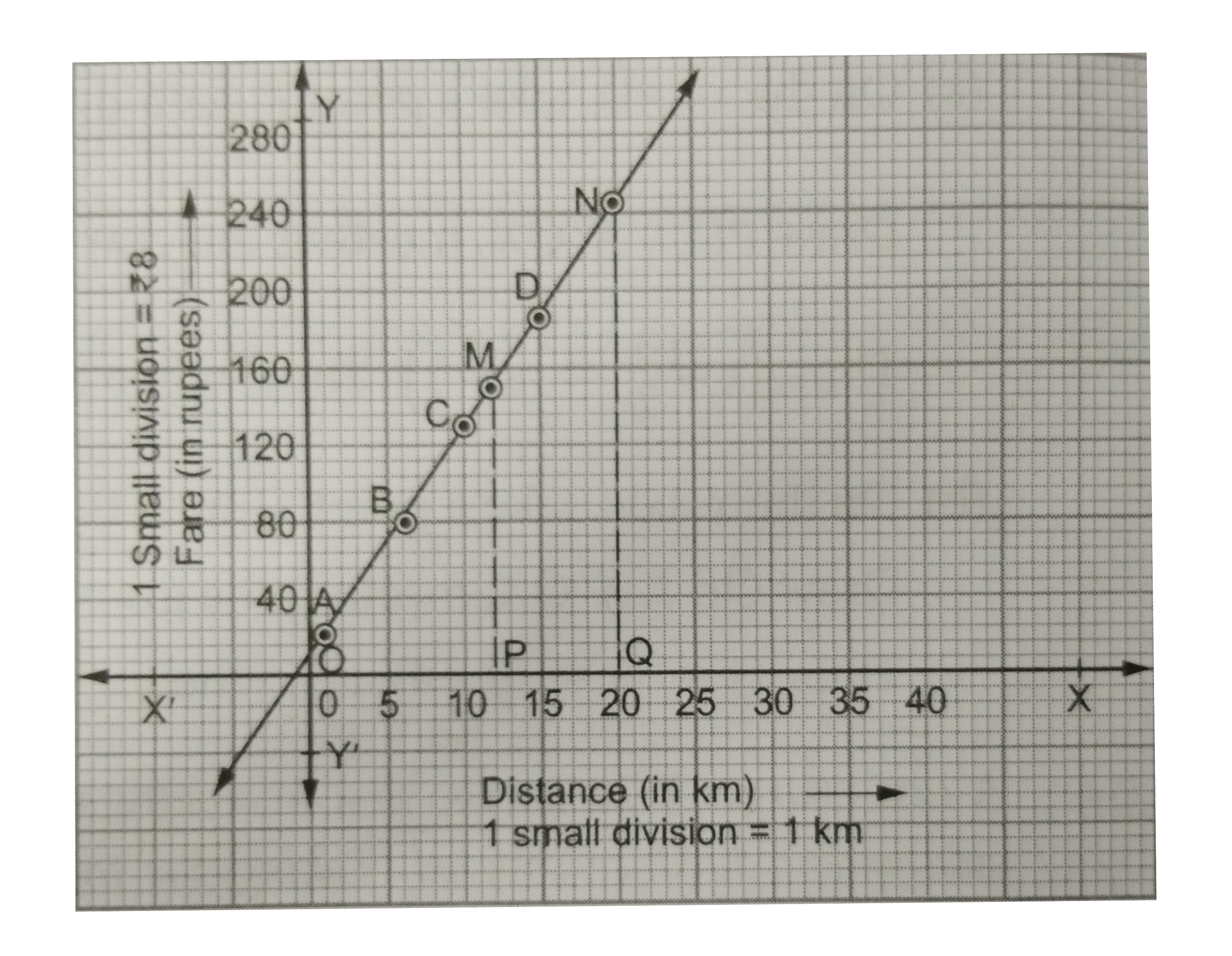InterviewSolution
Saved Bookmarks
| 1. |
A taxi charges .Rs 20 for the first kilometre and @ .Rs per km for subsequent distance covered. Taking the total distance covered as x km and total fare .Rs y, write a linear equation depicting the relation between x and y. Draw the graph between x and y. Form your graph, find the taxi charges for covering (a) 12 km and (b) 20 km. |
|
Answer» Solution :The REQUIRED linear equation is given by `y=20+12(x-1) rArr y=8 + 12x""`…(i) Putting `x=1" in (i), we get"y= ( 8+12 xx 1) = 20.` `x=6 " in (i), we get " y = ( 8 + 12 xx 6) = 80.` Putting `x=10 " in (i) , we get " y= ( 8+ 12 xx 10) = 128.` Putting `x=15 " in (i), we get "y= ( 8 + 12 xx 15) = 188.` Thus, we have the following table: `{:(x,1,6,10,15),(y,20,80,128,188):}` On a graph paper, draw lines X'OX and YOY' as the x-axis and the y-axis respectively. Choose the scale. Along the x-axis: 1 small division = 1 km. Along the y-axis : 5 small division = .Rs 40. Now, the plot the points `A(1,20), B(6,80),C(10,128) and D(15,188).` Join AB, BC and CD to get the singlegraph line AD, as shown below.  (a) On the x-axis , take a point P such that OP=12 km. Draw `PM bot X'OX` meeting the graph line at M(12,152). Thus `(x=12 rArr y=152)`, i.e., when distance COVERED is 12 km then the taxi -fare is .Rs 152. (b)On the x- axis, take a point Q such thatOQ= 20 km. Draw `QN bot X'OX`, meeting the graph line at N(20,248). Thus ,`(x= 20 rArr y= 248)` i.e., when distance covered is 20 km then the taxi -fare is .Rs 248. |
|